Resolution Trends Dashboard
The Resolution Trends dashboard provides insights into resolution trends over time. It lets you view and analyze several key metrics related to the resolution process of your workflow. These metrics can help you optimize your identity graph by consolidating records and improving match rates.
On the Workflows page, click the More Options menu (
 ) of the workflow you want to review and select .
) of the workflow you want to review and select .Note
The “Metrics” option is unavailable for workflows that have not yet been run successfully.
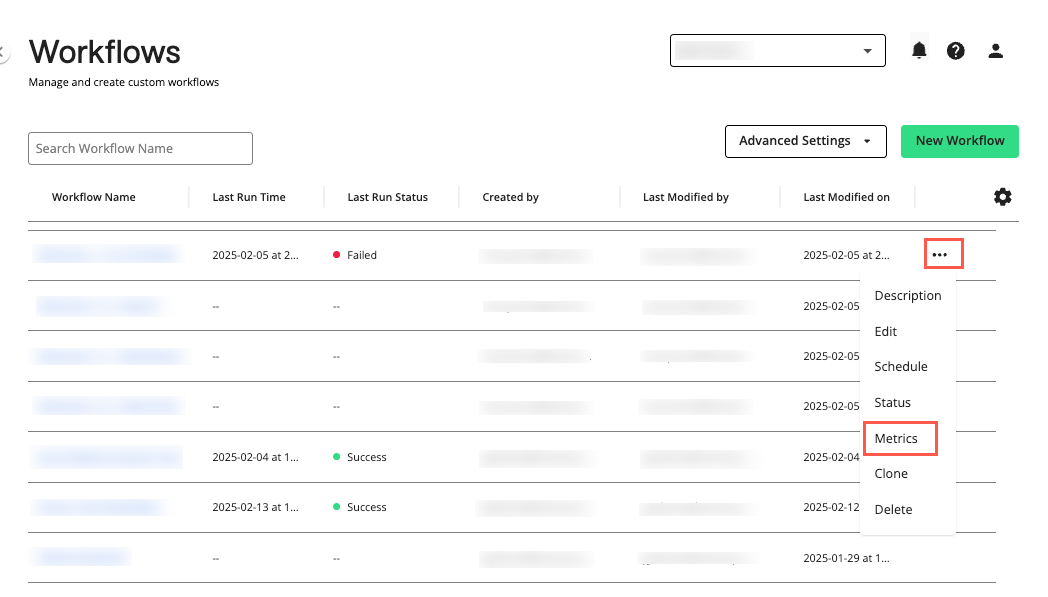
The Graph Build Overview dashboard displays.
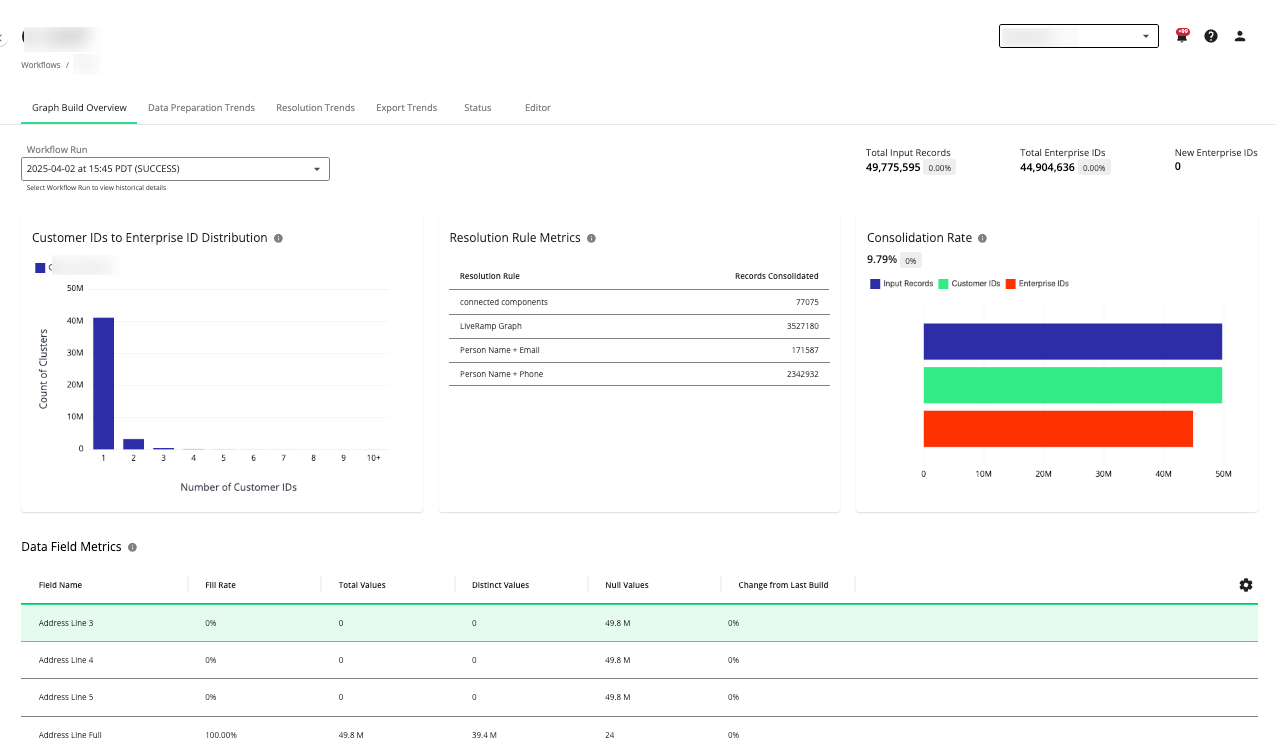
On the Graph Build Overview dashboard, select the tab
The Resolution Trends dashboard displays.
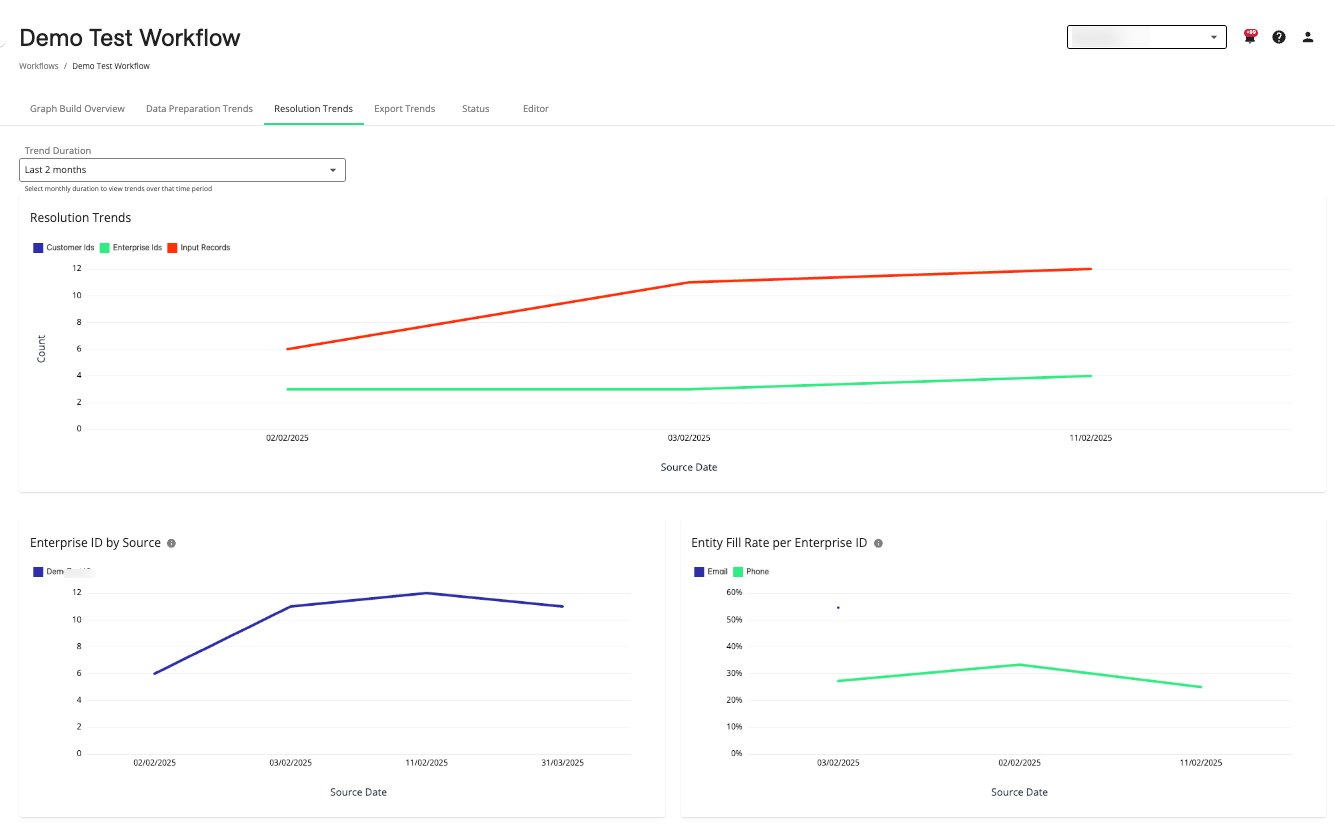
Actions You Can Perform on the Resolution Trends Dashboard
You can perform the following actions on the Resolution Trends dashboard page:
View resolution trends, Enterprise ID by source, and entity fill rate per Enterprise ID metrics.
Adjust the time period in which to view resolution trends for the previous months by selecting the number of months in the dropdown list.
Navigate to the Graph Build Overview, Data Preparation Trends, or Export Trends dashboards by selecting the desired tab.
View the workflow status by selecting the tab.
Edit the workflow by selecting the tab.
Resolution Trend Metrics
The following metrics are available on the Resolution Trends dashboard:
Note
Hover over the source data within a chart to display more details. To show or hide sources, click the corresponding source icons located at the top of each chart.
Resolution Trends
The “Resolution Trends” chart displays trends over time in the number of Customer IDs, Enterprise IDs, and total input records by source date. This can be useful to help you determine if your resolution rules need adjustment. Typically, as more records are processed, Customer IDs may increase, but Enterprise IDs should increase at a slower rate due to consolidation during the resolution process.
Note
To adjust the trend duration, select the number of previous months from the dropdown list. You can select monthly intervals from the last 2 to 6 months.

If the number of Enterprise IDs increases or decreases significantly compared to the number of Customer IDs, this could indicate an issue with data sources or a change in resolution rules.
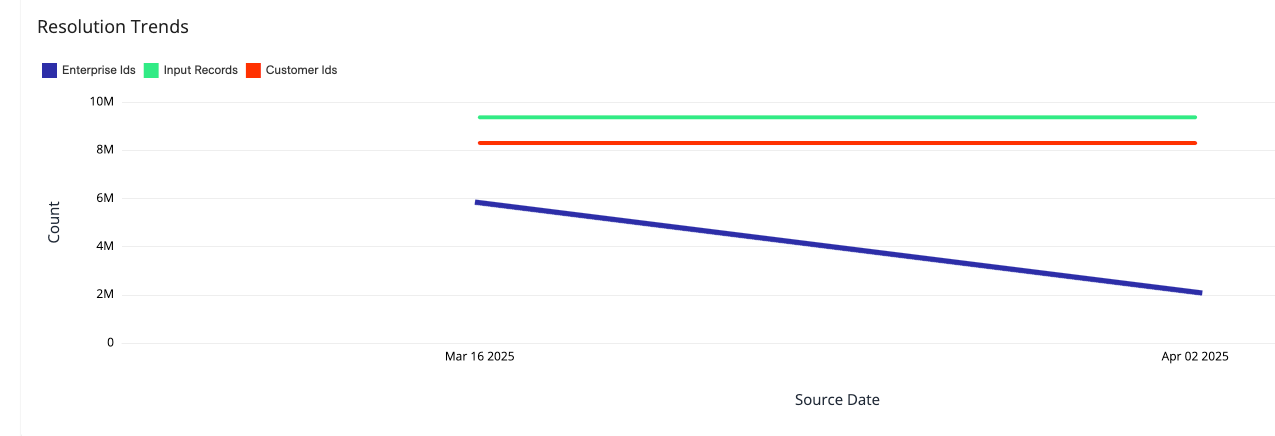
Enterprise ID by Source
The “Enterprise ID by Source” chart displays the number of Enterprise IDs generated by each data source. This can be useful to help you identify data sources that are effectively consolidating and those that may have consolidation problems you should investigate.
Note
The sum of Enterprise IDs across individual sources may exceed the total Enterprise ID count (shown on the Graph Build Overview dashboard) because some Enterprise IDs can be associated with multiple sources.
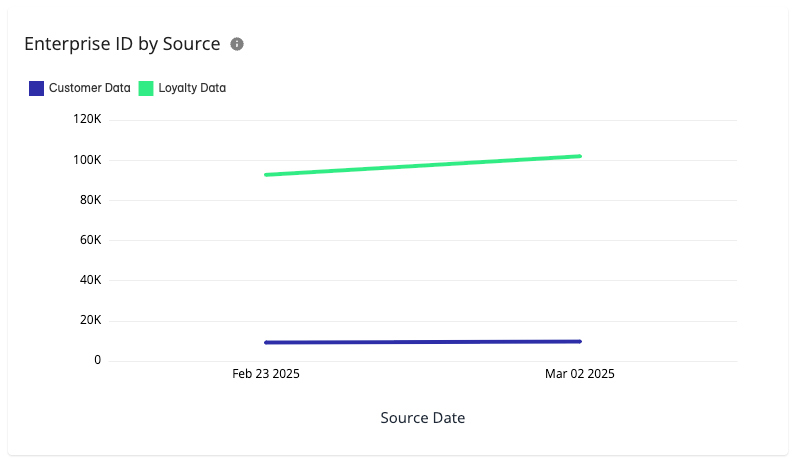
If the number of Enterprise IDs is at or near the number of Customer IDs for the same source, this could indicate an issue with your data sources or resolution rules. If the number of Enterprise IDs is quite a bit lower than the number of Customer IDs for the same source, this could indicate an issue with your resolution rules.
Tip
See the “Consolidation Rate” chart on the “Graph Build Overview” tab for the total number of Customer IDs.
Entity Fill Rate per Enterprise ID
The Entity Fill Rate per Enterprise ID chart displays the fill rate of each mapped entity for every Enterprise ID across graph builds. A higher fill rate indicates more complete information for those Enterprise IDs. This can be useful to know to assess the effectiveness of your resolution rules. Generally, more complete information per Enterprise ID can drive higher match rates.
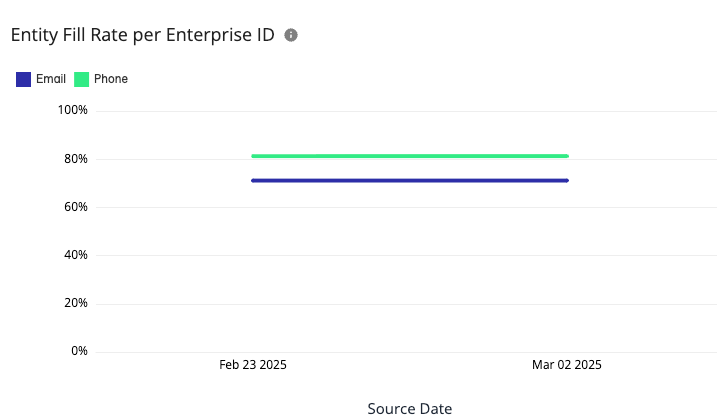
Lower fill rates or significant drops in fill rates may indicate missing data or changes to data preparation mapping. Entity fill rates by source can be especially helpful to determine the effectiveness of a resolution rule. For example, if you are seeing a low fill rate for phone, then a “Name + Phone” resolution rule would probably not be effective for consolidation. Low fill rates across different entities might suggest adding “Contact Enrichment” to your data preparation processes.
